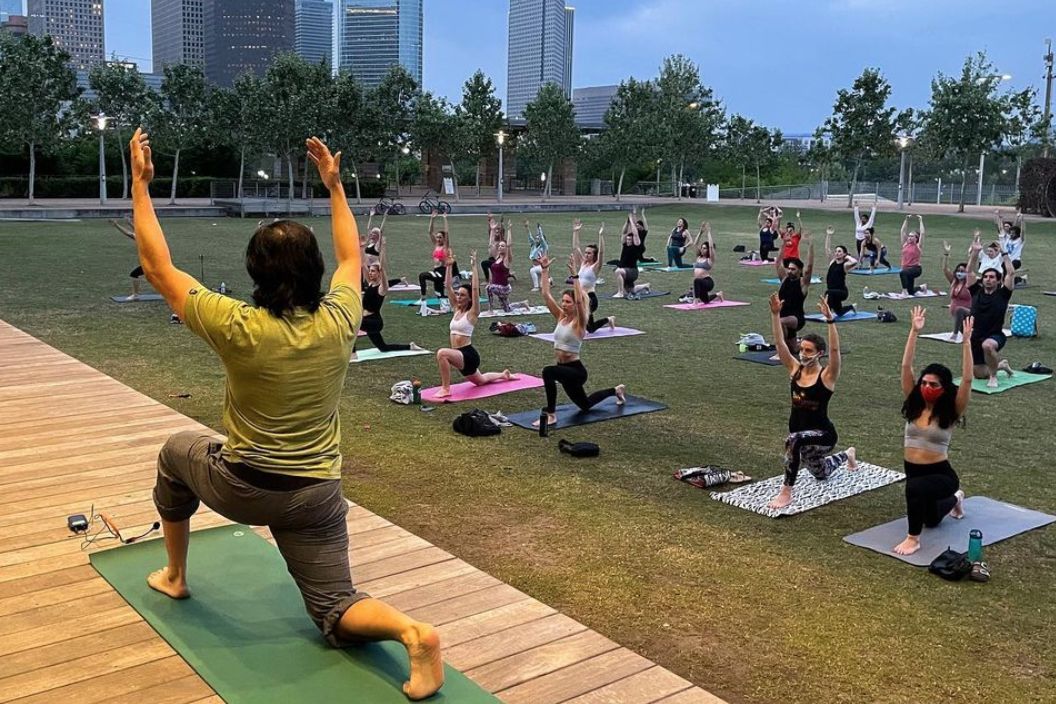Crossfit Confidential

Intrepid reporter Michael Hardy (not pictured) embeds himself in the world of Crossfit® to see what the fuss is all about.
Image: Shutterstock
On a recent Spring evening I found myself at District H CrossFit in the Heights, lined up in military-style formation with a few dozen young, upwardly mobile Houstonians, each of whom paid $200 a month for the privilege of being worked to exhaustion several times a week by a team of fanatical drill instructors. At my feet was a 45-pound metal bar loaded with two 15-pound weights, which I would shortly be hoisting repeatedly to my shoulders, as quickly as possible, in a move that Olympic weightlifting fans know as a power clean. I took a long sip from my water bottle as I listened to Alex, our coach, yell out instructions for the workout—three four-minute sets of power cleans alternating with six lateral-bar “burpees,” fiendish combinations of jumping jacks and push-ups that the military used to test the fitness level of recruits during World War II.
Houston CrossFit
map.crossfit.com
Alex counted down from 10, then started the clock. Techno music boomed across the gym. I squatted down and gripped the bar, keeping my back straight as I stood up, using my hips to propel the bar up and out before finally catching it lightly on my clavicle, my elbows forward, the bar resting gently against my Adam’s apple. (Or that’s how I was supposed to do it—my form was wretched, as the coaches never tired of reminding me.) After a few cleans, I moved to burpees, then back to cleans, and so on until I was pouring sweat and my muscles felt like they were filled with battery acid. I gazed longingly at the gym’s open door and fantasized about dropping the weight and walking out. The only thing keeping me inside? The knowledge that after this one final workout I would never, ever have to do CrossFit again.
Before CrossFit, I considered myself a reasonably fit human being. I run about 10 miles a week, hit the gym regularly, try to eat right. All it took was one introductory session at District H to expose just how out of shape I really was. My class contained four guys and three girls, all in their twenties or thirties, save one middle-aged man with a beer gut who looked like he had wandered in from his son’s Little League game. Other than the two of us, the group was composed entirely of well-sculpted bodies, making me wonder why these people had signed up for CrossFit in the first place. The answer came an hour later, as we all slumped on the floor after the workout, gasping for breath. CrossFit has a way of humbling even the most dedicated gym rat. As we tried to gather enough strength to get off the floor, Hernan, another coach, gave us a warning about what to expect. “I can’t tell you it’s going to get any easier,” he said sternly. “If you feel like it is getting easier, you aren’t working hard enough.”
CrossFit was created by Greg Glassman, a former gymnast who created the high-intensity workout regimen—cardio plus strength training plus flexibility exercises, with few breaks in between—to train elite athletes at his Santa Cruz gym in the ’90s. Sports medicine experts criticized it, warning that the regimen could lead to serious injuries or even death, but fitness enthusiasts embraced CrossFit anyway. Its popularity has exploded over the past two decades; today, Glassman’s company boasts a network of 35,000 accredited trainers and 5,500 affiliated gyms across the world, including 165 in the Houston area. While popular with athletes, police, and the military, CrossFit seems to draw its core clientele these days from the global professional-managerial class, whose members can afford to pay high fees for what its devotees seem to believe is a test of real-world fortitude. As Glassman puts it on the official CrossFit website, he “sought to build a program that will best prepare trainees for any physical contingency—not only for the unknown, but for the unknowable.”
As I staggered out of the District H gym after my sixth and final workout, still reeling from all those power cleans, I thought about Glassman’s words. Most of the CrossFitters I had met during my month at the gym sat behind desks all day, and the only real physical contingency they would ever encounter, barring the occasional broken elevator, was CrossFit itself. In its devotion to preparing for vague future calamities—“not only the unknown, but the unknowable”—CrossFit seems akin to the similarly flourishing survivalist and doomsday prepper movements. As for me, I’ll be returning to my regular gym and my regular runs. When the apocalypse comes, I’ll take my chances.
Just don’t make me do any more burpees.








